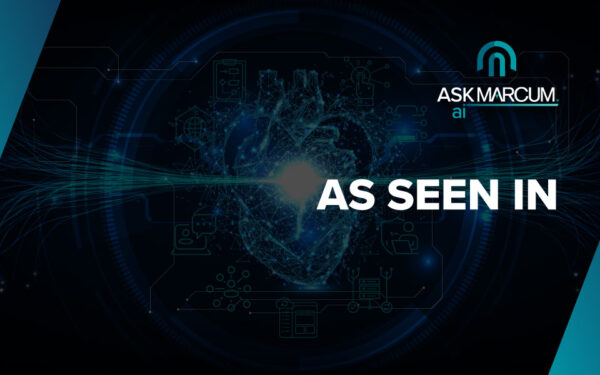Cloud Security: 5 Things to Consider When Migrating to the Cloud
Cyber-attacks are a primary concern for businesses in today’s online environment. A security breach can create incredible financial and asset losses. Companies can lose up to $25 per minute due to data breaches alone. In addition, it can ruin the customer’s trust that their information is safeguarded and spoil the company’s overall reputation.
Now more than ever, organizations utilize cloud infrastructures to store important applications, data, and operations. However, despite all the advances in cloud security, cyber security remains a prominent concern, and businesses continue to look for cloud solutions. Therefore, companies must center DevSecOps in their business processes and strategy for the efficiency of cloud operations and to optimize their data protection.
When selecting a Cloud Service Provider (CSP), it’s crucial to consider the security factors involved during cloud migration and for cloud operations. In this blog, we’ll break down where the responsibility of cloud security lies; then discuss five security factors for consideration when migrating to the cloud and the digital transformation it brings.
Shared Responsibility Model
When developing a cloud migration strategy, you need to consider who is responsible for the different components of the cloud’s security. Depending on the cloud model the company chooses, such as SaaS, IaaS, or PaaS, the company will have varying responsibilities surrounding the environment’s security.
For example, suppose a company is using the Software as a Service (SaaS) model. In that case, the CSP is responsible for the security of the underlying infrastructure; such as the servers and operating systems on which the specific cloud application runs. But the business using the cloud is responsible for access to the application.
If a company uses an Infrastructure as a Service (IaaS) model, they are responsible for the security of the infrastructure, such as the servers, operating systems, and network devices. Here the business must ensure the systems are kept updated and properly configured. With this model, the cloud provider is only responsible for the physical security of the infrastructure.
Despite being aware of the shared responsibilities, the business is always accountable for the security of the data. If there is a compromise, the business is ultimately responsible, not the cloud provider. It’s essential to consider the service level agreements with the CSP to understand who’s responsible for each aspect of the service while assessing and understanding potential security factors.
Five Crucial Security Factors
When selecting a cloud provider, a business should consider the following factors:
1. Compliance
Whether your business is local, national, or international, it’s essential to make sure it meets any area compliance requirements. When it comes to auditing your cloud environment, you should have monitoring capabilities to notify cloud infrastructure managers of potential policy violations to ensure your cloud is compliant.
2. Reliability
Businesses want to ensure the reliability of their cloud infrastructure. In addition, they should have a disaster recovery plan to make sure business operations can continue if there are issues with the cloud. Companies should also implement a data loss prevention strategy to help avoid potential security risks.
Following security best practices and establishing system hardening processes can include eliminating unnecessary programs and applications, monitoring points of access and permissions, and ensuring encryption, which we’ll discuss in a bit.
These process integrations can assist in early fraud detection. However, asking your CSP about their plan to resolve potential problems is also a valuable strategy to ensure the reliability of the cloud.
3. Visibility and Scalability
Cloud migration often offers more visibility and scalability for business operations since employees can access the information and applications from almost any location. Therefore, it’s vital to automate patches and software upgrades where applicable to ensure the visibility and scalability of a company’s cloud operations.
Generally, there are standard security tools for a CSP, but it shouldn’t stop there. It’s important to monitor and assess all cloud components to ensure they can successfully function for all business procedures and on all essential platforms.
Evaluating all data streams for the cloud so you can properly store and organize data for easy accessibility is crucial. Additionally, the adaptability and management of the cloud for incoming data are essential for cloud security.
4. Encryption
Encryption is one of the main factors in avoiding and moderating potential breaches since it converts data, making it more difficult for outside entities to access and understand crucial information and processes. Encryption is also an excellent way to help enforce regulatory compliance for data privacy.
Therefore, encryption keys need to be carefully crafted and protected, and access to such encryption keys must be limited throughout the organization. It’s also essential to evaluate your CSP’s encryption standards.
Incorporating automated processes, machine learning, AI technology, and multi-factor authentication are steps businesses can take to better ensure proper encryption and cloud security.
5. Employee Integration
Individuals throughout the organization who interact with the cloud should be adequately trained to utilize it correctly. A central part of employee training should include security training to identify potential risks and include the steps they should take if they perceive an incoming threat.
Proper standard operating procedures can be beneficial for early detection and management, incorporating remote access procedures for employees working from home. Moving them to the cloud allows them to work from anywhere, and managing access will be necessary for a seamless workflow strategy.
It is also important to integrate online workflow platforms to help mitigate potential issues that may arise in employees’ daily operations, especially where human threat monitoring is concerned. Companies must implement a hierarchy and risk management plan for assessing who has access to elements throughout the cloud.
Conclusion
With the growth of information on the cloud coming from multiple sources, cybersecurity is a growing and central part of most companies’ strategies.
Since cloud security is essential to a cloud migration strategy, it’s important to properly vet your cloud provider to address and plan for potential vulnerabilities. In addition, understanding the threat factors can help prepare you for future security risks.
While cloud migration and security can be time-consuming and strenuous, working with the right partners can help alleviate stressors along the way.
Marcum Technology provides a full cybersecurity service offering. If you need any help, from beginning a review of your security posture to investigating a cybersecurity incident, or even if you just want to ask for advice on a situation you are facing, please contact us at [email protected]. #AskMarcumTechnology



















